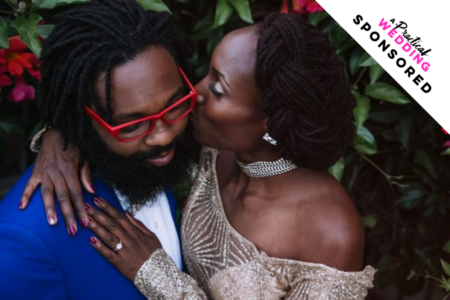I’m nineteen years old. I’ve just finished my freshman year of college, I’m sitting in the office of the top rheumatologist in the state, and I’m terrified.
After years of suffering from chronic pain, I was finally getting the results back from my blood tests and was bouncing impatiently on the observation table as I tried to decide whether or not I was hoping for a diagnosis. On the one hand I’d receive answers and potential treatment. On the other hand, I could receive life-changing—and potentially terminal—news.
The doctor entered the room looking down at a stack of papers on a clipboard in his hand and didn’t meet my eye. “Well, you don’t have lupus,” he said, smiling sideways at me, as if we were sharing a joke. “So that’s great.”
I waited for him to say something else. “Okay. So what do I have?”
“Your tests all came back normal.” I felt my heart start to race.
“But… I don’t feel normal.”
He smiled in what I’m sure was meant to be a kind way. “You’re young.” He took a step toward me. “Everything is normal here. You don’t need to be worrying about this.” He extended an arm and gently patted me on the top of my head. Like I was a dog.
I was nineteen.
“Just keep living your life the best you can.”
WHen Abnormal is the New Normal
I was nineteen and I was in pain from the moment I woke up to the moment I got into bed. I was nineteen and exhausted all the time. I was nineteen and I couldn’t keep up with my friends who wanted to go out on Friday and Saturday, and then walk to brunch on Sunday. I was nineteen and I couldn’t walk up a flight of stairs without resting partway.
That short appointment led to a decade-long mistrust of doctors and the entire medical field. I spent years putting my health on hold because seeking help would mean going to see a doctor, and I didn’t want to do that because spending time, travel, and money just to be invalidated and told that “I was fine” didn’t seem worth it to me. So I self-diagnosed where I had to, managed my chronic pain with over-the-counter pills (which only ever went so far), and told myself what all the doctors had: that nothing was wrong.
My condition got worse through college. By the time I graduated, I could barely walk. During annual exams and physicals, I’d explain my pain, but doctors would shrug their shoulders and suggest taking ibuprofen… which I’m allergic to. They would know that if they spent more than fifteen seconds looking at my chart.
I started blogging about my experience and my pain. I made friends online with similar symptoms and eventually found the name of a condition that matched what I felt. A complete stranger wrote into my blog and told me to seek out a specific geneticist at a nearby hospital who specialized in that condition. I held my breath, booked an appointment, and he gave me what I didn’t know I had been seeking: a diagnosis.
The “Power” of Positive Thinking
My feelings on the medical field didn’t change overnight. Even post-diagnosis, I still only went to see a doctor when something was hideously wrong, but I had become so used to the pain that I didn’t seek more help on it. I eventually started working with a physical therapist who patiently strengthened my muscles to support my useless ligaments. I was transferred to a new GP who finally understood me as a woman of color—because she was one too. A few years later, I mentioned my condition to a dermatologist who was seeing me for a benign lump on my chest (that I had ignored for almost two years because I was so sure I’d be told it was nothing), and the whole staff altered their surgical techniques to get it out of me safely.
Then something went wrong with my heart. I had suffered from chronic palpitations and increased heart rate for over six years, but I thought I could deal with it on my own. I cut out caffeine and sugar. I made sure I was eating balanced meals, sleeping well, and exercising regularly. Then the symptoms got worse. I started blacking out. My heart rate would increase with no clear trigger and stay elevated for over an hour. My partner urged me to contact my GP, and I knew they were right; I didn’t want to live like this anymore and I deserved a better quality of life.
I walked into the cardiologists office with confidence. Something was wrong, and I was here to get it fixed. I hadn’t even realized the change in how I saw doctors until this appointment. I had called my GP and been prescribed a heart monitor. For two weeks straight, I had a two-inch device attached to my chest, tracking every heartbeat. Three days after taking it off, my GP called: the results were abnormal, and she was referring me to a specialist.
I sat down and waited, ready for whatever he might tell me. Change in diet or exercise habits? Medication? More physical therapy? I could take it.
The doctor entered the room looking down at a stack of papers on a clipboard in his hand and didn’t meet my eye. “Well, it’s not an arrhythmia,” he said, smiling sideways at me. “So that’s great.”
I waited for him to say something else. He seemed to be waiting too. So I told him what my own research had suggested, and asked him to confirm or deny, and to provide me with ways to manage the symptoms I was experiencing.
He reached forward and took my hand in his. Turning it over, he pointed out a spot on my wrist. “Do you know how to take your pulse? Try it now.” I did. “When you’re feeling anxious, take your own pulse just like that. Just remind yourself that it’s nothing serious.” I stared at him. My abnormal heart results were nothing serious? “I think you just need to think more positively.”
He had my heart monitor results in front of him; I could see them from where I sat. I pointed at them and said, “I want you to help me make this clear. You have my results, and agree that they’re abnormal. And you’re telling me this is a mental issue. Is that correct?”
He blinked at me for a moment. It struck me that it was likely that very few—or maybe none—of his patients had spoken to him that way before. He recovered, gave a tight smile, and told me that he wasn’t saying my symptoms weren’t real or weren’t happening, but that what I was feeling was nothing to worry about. I nodded curtly, took the after-visit summary he handed me, and left the clinic to make some phone calls.
First, I called my mother in tears. We talked about the rheumatologist I saw when I was nineteen. About every doctor who had told her that she was “fine” in the months before she fell into a coma and doctors had to call in my dad from work to say goodbye. About how lucky we were she survived. About how heart diseases affect men and women equally, but women are far more frequently misdiagnosed, sent away without medication or care, and essentially sentenced to death by entirely preventable causes. She helped me reclaim my anger, and once I had the right words, I got a hold of my GP and demanded a second opinion.
Where do we go from here?
Women have to fight an uphill battle. Our health concerns are dismissed as “anxiety,” and we have to advocate time and time again for our own lives. We have to do it online, in bars and clubs, in voting booths, and in doctors’ offices. Women with disabilities and chronic illnesses who already spend finite energy just existing, let alone getting themselves into the clinics, have to spend even more energy asking to be heard, to be taken seriously.
Looking back, the experiences I’ve had where doctors treat me poorly and don’t take me seriously have had one major thing in common: almost all of those doctors have been male.
Almost.
The patriarchy is deeply rooted into the health and medical industries, as it is everywhere in our modern world, and female doctors can be just as guilty of perpetuating this disparity. Being treated as a burden, whiner, or worrywart by a female doctor can feel like being slapped. Shouldn’t she get it? Hasn’t she lived through the other side of this story? Hasn’t she felt the sting of being treated as an exaggerator, the frustration of not being heard by someone who could save her life? But maybe this is just what she’s always experienced. After a lifetime of being shown, both directly and indirectly, that women will go to the doctor over every little thing, she’ll get used to not taking these patients seriously.
As much as I’d like it to, the patriarchy will not dismantle itself. I can’t make doctors aware of their own long-held biases and force them to change their ways in a single thirty-minute appointment. On the other hand, the more aware I am of the disparities that affect me as a female patient, as a member of a marginalized group, the more action oriented I can be.
If a doctor, resident, or medical student of any gender tells me that I’m fine, that nothing is wrong, that I’m just worrying too much and need to think more positively, I know I don’t have to take it at face value. Doctors, after all, are only human, and they are subject to human bias and prejudice. I can keep doing my own research, advocating for myself, and refusing to be afraid to ask for a second—or third or fourth—opinion. Their years of medical school don’t trump the years I’ve spent living in my own body. I know that what I’ve experienced is real, and I know that I deserve the best care I can find.
I can’t go back and explain all of this to myself at nineteen, but I can know it now and retake control of my health and my life—and I can urge every woman, person of color, and anyone with another marginalized identity to do the same.






